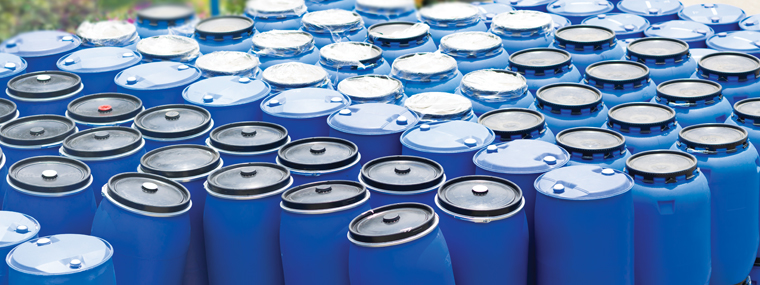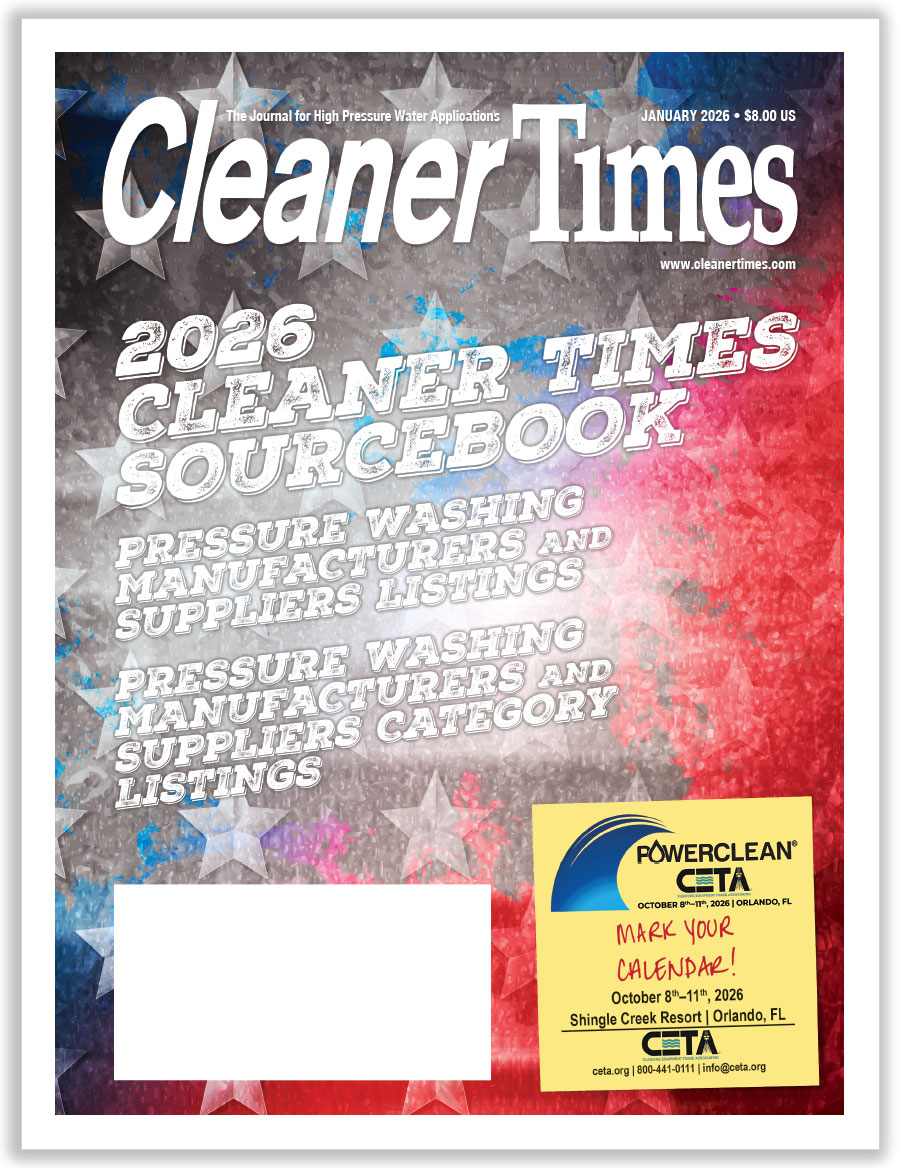
It’s an Exciting Time To Be Immersed in Chemistry
By April Hirsch / Published May 2017

Chemicals and pH Scales
Resins from trees and other plants have been used to make water-resistant coatings for 4,000 years (at least). There’s nothing new about using renewable resources to produce polymers that improve the quality of life.
Today, an interest in using renewable resources to produce polymers for applications is tied to efforts at sustainability. Plants as familiar as tulip and mint are being tapped for the building blocks (monomers) that yield not only resins but also elastomers. Limonene (from lemon peel), which is well-known to our industry, and, of course, monomers from pine are in the mix too.
[There’s an excellent review article, “Sustainable polymers from renewable resources” by Yunqing Zhu et al., in the December 15, 2016, issue of Nature. For a link to the article, see: www.nature.com/nature/journal/v540/n7633/abs/nature21001.html.]
It’s an exciting time to be immersed in chemistry, just as it has always been. Excitement aside, however, most of us are not chemists. We always benefit from a few reminders of the basics we may have forgotten or the essentials we have yet to learn.
The safe use and correct choice of chemicals begins with training. “We need to train new contractors,” says Terry Murray, the vice president–sales for Etowah Chemical Sales & Service in Gadsden, AL.
Experienced and successful contractors have an understanding of chemicals that allows them to achieve the correct fit of chemical to job, explains Murray. But to get everyone off to a good start, manufacturers, distributors, and contractors who hire employees must be committed to continuing education about chemicals.
Things keep changing in the field of applied chemistry, and contractors must keep pace. For instance, says Murray, “less toxic products” are now the norm. “Acid is made from citric acid instead of muriatic and phosphoric acid.”
Industrial customers, who work to comply with cradle-to-grave requirements of the Environmental Protection Agency (EPA), typically lead the way in replacing chemicals with difficult profiles. “Our largest industrial customers do not want cleaners made with caustic soda, NP-9 surfactant, or glycol ethers,” says Murray.
Nonylphenols (NP) are now a nonstarter. “No more products are made from NP-9.5,” says Murray. “Newer, more efficient surfactants are what we formulate with now.”
Anything a manufacturer can do to assist with training of end users benefits the entire industry. “We need to train contractors in proper dilution ratios and testing of their use solution,” says Murray. “We make titration kits for contractors diluting more than 30:1—kits that use downstream injectors. A refractive meter can be used at dilutions below 30:1—for example, 10:1.”
Training becomes easier with online tools and innovative graphics. Murray points to the many creative tables and scales that illustrate the pH available via the Internet. They get pH across in concrete terms, since few non-chemists want to be thinking about free hydrogen ions in solution.
One pH scale produced by Environment Canada illustrates acidity and alkalinity and everything in between with familiar substances. Battery acid marks the acid (pH 0) end of the scale and lye marks the alkaline (pH 14) end of the scale.
Whichever tool is used, it’s the training that matters. “We need a training program,” says Murray.
Given training, new end users will quickly understand why alkaline water leads to scale formation and why acid water is corrosive. (Many, to be sure, will know this already.) End users will also fully appreciate how just a small change in pH in natural waters (pH range generally 4 to 9) can have serious consequences. A slight decrease in pH (more acidic) is all that it takes to greatly increase toxicity of most metals, cyanides, and sulfides. And a slight increase in pH (more alkaline) is enough to increase the toxicity of some familiar pollutants such as ammonia.
Pound-Wise Evaluation
When choosing chemicals, penny foolishness causes trouble. Bad outcomes and safety might both be compromised by trying to save a few cents.
“The buying decision for chemical purchases should not be strictly based on price,” says Walter M. Geslak, president of Consolidated Chemex Corp. in New Brunswick, NJ. “And there are many differences between suppliers.”
Look for a cost-effective purchase by putting chemical cost in context, says Geslak. “Cleaning chemicals are one of the smallest costs in the whole cleaning process, yet many purchasers are strictly stuck on, ‘How much for a 55?’ mentality.’”
A contractor should heed the reminder that “the single, largest cost in the cleaning process is labor,” says Geslak. “What a user needs to do to evaluate one cleaning product versus another product is to take the two different cleaners and use them at the concentration that is indicated on the label; use the same dwell time, with or without heat; and finally note how much brushing effort is needed to get the surface clean.”
By approximating jobsite conditions, a contractor can make an exacting choice. “The secret, and this is very important, is to let everything completely dry to do the evaluation,” says Geslak. “This is very important because this is what the end user will see in a dry surface.”
Candidly appraise results, says Geslak. “How clean is it? How much brushing effort did it take? Was the surface damaged? The evaluator should do this on two or three different days—and with different surfaces and water sources—to really evaluate one product versus another and not be totally stuck on price as the only decision-making point.”
Q&A Chemical Expertise
E. W. (Bill) Robins, president of Cartier Chemicals Ltd. in Lachine, Quebec, Canada, responds to a few questions about chemical use in cleaning.
Cleaner Times [CT]: How can contractors become as educated as possible about chemicals?
Robins: There are three facets to this. One, using the Internet and industry publications, contractors can learn in general terms which types of chemicals are best suited to the tasks they wish to perform. Two, they can then approach suppliers, who can recommend the best products to accomplish the task and importantly learn the best practices to apply them. Three, it is important to get the safety information on any product they handle and read up on how to interpret the information as it applies to their work environment.
The GHS system has made it easier to understand the issues, if any, surrounding safe use of products. [GHS refers to the United Nations’ Globally Harmonized System of Classification and Labeling of Chemicals.]
Chemicals are a great tool, but they must be used properly, taking into account the entire context of the job. Context encompasses worker safety, client safety, workplace environmental issues, impact of the chemicals on the surfaces they are applied to, and possible collateral impact to surrounding areas.
CT: What role do distributors have in promoting the understanding of chemicals?
Robins: Distributors have to make sure their clients are qualified to use the products they are selling them. They need to make sure that the clients have the safety data sheets and are aware of the transport regulations concerning any hazardous materials they may be handling. Impressing upon clients the need to respect, emphasis on respect, chemicals will reduce complaints and maintain reputations.
CT: Do you have a tool that you supply to customers to help them understand/quickly grasp pH?
Robins: There are all sorts of guides to understanding pH on the Internet. Having a grasp of pH helps, but once you get beyond the basics, it is the ingredients producing that pH that matter. For example, two cleaners have a pH of 12 and one gets its pH from TSP, which is trisodium phosphate, while the other gets its pH from sodium metasilicate. If you spray both products on a glass surface while cleaning a nearby structure, and they dry in the sun, the metasilicate may leave a stain on the glass. So the TSP-based cleaner may be safer to use on structures with lots of glass, even though both may clean the soil. Understanding compatibilities helps reduce unintended problems.
CT: How would you evaluate the trajectory of chemicals regarding environmental impact?
Robins: Producers are offering more environmentally-friendly options where the task permits. There is more awareness from clients, and this persuades contractors to follow best practices. There are less toxic and more biodegradable products on the markets, but there is also more emphasis on safer, more environmentally-conscious ways of handling hazardous products when they are needed. Furthermore, there is a lot of emphasis on trying to substitute physical methods to replace chemical ones wherever possible. The question can now be asked: Do I really need a chemical to do this job?
CT: What’s the one thing you wish everyone in the industry knew about use of chemicals?
Robins: Chemicals should not be feared; uneducated use of chemicals should be.
CT: What should we have asked you about chemicals?
Robins: What’s the future look like? There is a lot of research into soil resistant or repellant surfaces and coatings, so it may be possible to clean a surface simply by training a hose on it. But I think the industry is safe for a while.





